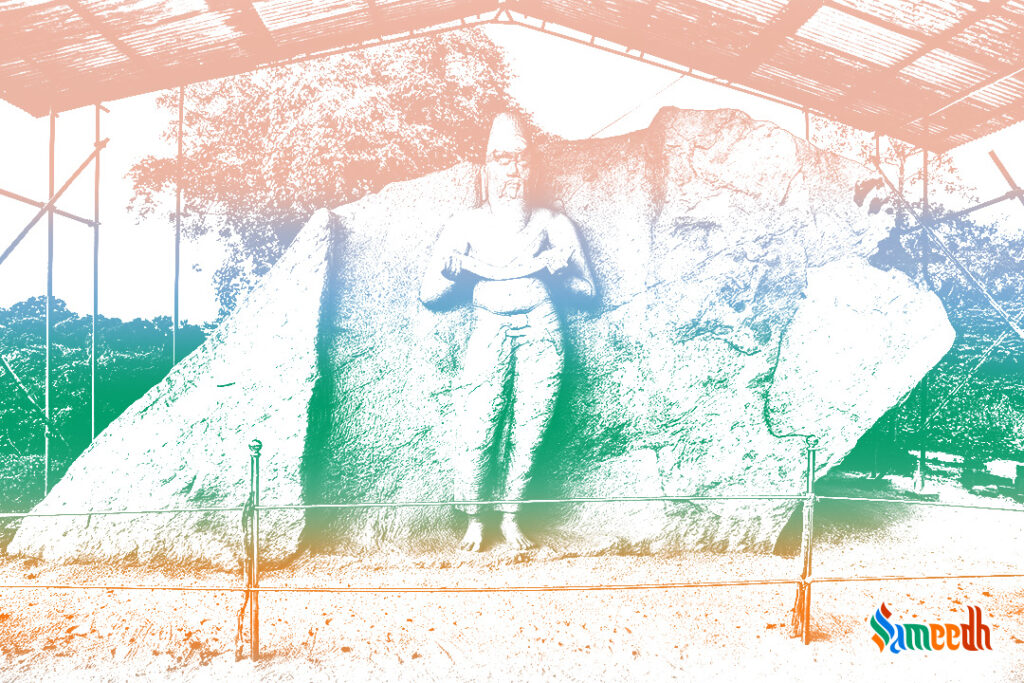Pulastya is one of the revered seven sages – Saptarishi. He gave the knowledge of different Puran. He was quite well-known across south India, Sri Lanka, and Southaeast Asia.

Saptarishi – The Seven Seers
‘Sapta’ means seven, and ‘Rishi’ means a sage or seer in Sanskrit hence, Saptarishi literally means ‘seven seers’. Saptarishi are the Brahmarishi or scholars who wrote the scientific Indian scriptures such as Ved, Puran, and Upanishad. They created and updated them from time to time. The legends say, Brahma created a series of scholars as ‘Manas Putra’ to impart wisdom and education to human beings.
Rishi Pulastya
Pulastya Rishi is also considered to be one of the seven seers or Saptarishi. He was one of the ten mind-born sons of Brahma. He was given the responsibility to spread the knowledge of Ved – Puran amongst the civilization.
Pulastya was blessed with alchemy. He only used vessels made of Gold, to conduct his rituals. It is said that after a ritual, he offered the contributing Brahmins all the gold they can carry. They still left behind so much gold that was later given to Yudhishthir – Pandav king.
Pulastya was the one who explained Vishnu Puran to Rishi Parashar. He also explained the beginning of the world by Brahma – by explaining Padma Puran to Bhishma. He is also knowns as the person to whom Naradmuni explains the Vaman Puran.
In Indian Culture, marriages used to be decided scientifically and emotionally as well. The Kundali readings and many other considerations including – character and taste, were of utmost importance.
Pulastya had married Havirbhu, with whom he had two sons – Agastya and Vishrava. Agastya became one of the greatest of seers in India, and he is revered across south-east Asia. Pulastya is also popular in south-east Asia. There are numerous idols and legends in Thai Ramakien – the version of Ramayana written by the kings of Thailand – including King Rama VI. Here he is known as Latsatian.
Vishrava was also the father of Kuber, Ravan, Vibheeshan, Kumbhakarn, and Shurpanakha. And the tales of Ramakien narrate the tales of Ramayan, as a Thai epic.
Also, in the Sinhalese history, the city where from where Parakram-bahu rules, is identified as Pulasti Nagara, today’s Polonnaruwa in Sri Lanka.

Pulastya Pulhashram is located in the Myagdi district in Nepal, near Pulachaur village. It is one of those sites known as Siddhi Peeth, and it is also mentioned in Shrimad Bhagwad Maha Puran.
Many well-known rishi-muni including Shiva, Pulastya, Pulaha, Vishrava, and Kapil – visited this place, lived here and attained the ultimate knowledge. Some legends say that this is the place where Ravan was born and brought up.
Rishi Pulastya’s timeline also interconnects the era of Ramayan and Mahabharat. One of the stories says that Pulastya Rishi relocated the Govardhan Hill to Mathura. Actually, he was taking it to Kashi, but due to Govardhan’s greed to see Krishna and attain moksh, he tricked Pulastya into establishing him there. Angry Pulastya cursed him of ever-diminishing height and to disappear ultimately.
Pulastya is a notable ‘Gotra’ or Brahmin clan lineages in India. The gotra helps people establish their roots as a part of Vedic traditions, not just family lineage.